Your search returned 43 results in the Category: social studies - 19th & 20th century history.
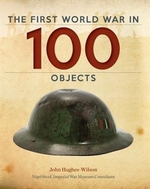
1ST WORLD WAR IN 100 OBJECTS
By: john hughes-wilson | Published: June 2014
A powerful visual and narrative treatment of the "war to end all wars". The First World War in 100 Objects draws on the most... [Read More]
A powerful visual and narrative treatment of the "war to end all wars". The First World War in 100 Objects draws on the most interesting 100 items that describe the causes, progress and outcome of the First World War. From weapons that created carnage to affectionate letters home, these 100 objects are as extraordinary in their diversity and storytelling power as they are devastating in their poignancy. This is the stuff of war at its most horrible. Here are a few of these objects: military significance -- a Vickers machine gun iconic power -- John Singer Sargent's painting, Gassed personal sentiment -- a German button given to a British Tommy in the Christmas Truce of 1914 political importance -- President Woodrow Wilson's Fourteen Points. These and the other 96 objects are displayed in brief chapters describing the associated people and events and illustrated with full color. The book is carefully organized into distinctive periods of the war and includes these examples: Imperialism, Nationalism and the Road to War (pre-1914): King George's Imperial Crown; Prussian Pickelhaube helmet; map showing Europe's alliances and animosities The Shock of the New (1914): "Your Country Needs You" recruitment poster; German jackboots; "Ole Bill," a London double-decker bus used to ferry soldiers to Ypres Theaters of War (1915 to 1916): Australian Battalion flag; Lusitania survivor's camisole; airdrop message streamer Mud and Blood (1916 to 1917): Postcard from the Eastern Front; trench club; discipline and desertion charge sheet From Near-Defeat to Victory (1918): British Mark V tank; "Hang the Kaiser" election sign; Toby jug A New European Landscape (from 1919): Gun used by German prisoners to shoot seagulls; sketch of the Whitehall Cenotaph; the old Kaiser crown. A History of the First World War in 100 Objects is a distinctive and original presentation of the military and human stories of this cataclysmic war that did indeed change the world.
- ISBN
9781770854130 - Binding
Hardcover - Category
Social Studies - 19th & 20th Century History
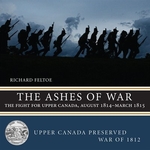
ASHES OF WAR THE FIGHT FOR UPPER CANADA
By: richard feltoe | Published: August 2014
The end of the War of 1812 brought with it great political, economic, and social upheaval. The sixth and final book of the Upper Canada Preserved... [Read More]
The end of the War of 1812 brought with it great political, economic, and social upheaval. The sixth and final book of the Upper Canada Preserved - War of 1812 series, The Ashes of War examines in detail the closing stages of the war on the Northern Frontier, including the two-month siege of Fort Erie, the engagement at Cook's Mills, the American attempt to recapture Michilimackinac (Mackinac), the tale of the Nancy, and the American raids into southwestern Upper Canada. It explores the impact that events occurring at the same time in the United States and at the peace negotiations at Ghent, in Europe, had on the ongoing war. It also examines the major military campaigns that were planned by the respective sides for 1815 - that is, until news arrived of the signing of a British-American peace agreement on December 24, 1814, officially ending the conflict, but not the story. The Ashes of War goes on to look at the significant post-war military, political, social, and economic impact the war had on England, the United States, the colonies of British North America (later Canada), and the Native nations on the continent. A fitting and comprehensive conclusion to this critically acclaimed series on the War of 1812-1815.The other books in the series are: A Call to Arms, The Pendulum of War, The Flames of War, The Tide of War, and A Crucible of Fire.
- ISBN
9781459722835 - Binding
Paperback - Category
Social Studies - 19th & 20th Century History
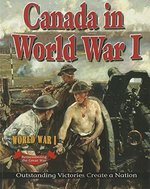
CANADA IN WORLD WAR 1 OUTSTANDING VICTOR
By: gordon clarke | Published: May 2014
This fascinating book describes Canadas coming of age during World War I on the battlefields and at home. When Britain declared war on Germany, it... [Read More]
This fascinating book describes Canadas coming of age during World War I on the battlefields and at home. When Britain declared war on Germany, it meant that Canada was at war, too. Most Canadians supported the war, but the government faced opposition about conscription from French-speaking Canadians who did not feel a particular loyalty to Britain. In the air, the incredible feats of Canadian flying ace Billy Bishop made him a hero back home. On the battlefield, Britain came to rely on Canadian soldiers, who had a formidable reputation for taking and holding military objectives when other troops had failed. Find out how the victories of Canadian shock troops in battles at Ypres (where they faced mustard gas poisoning), the Somme, Vimy Ridge, Hill 70, and Passchendaele helped give Canada a presence on the world stage. "About this title" may belong to another edition of this title.
- ISBN
9780778703921 - Binding
Paperback Canadian - Category
Social Studies - 19th & 20th Century History
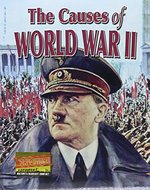
CAUSES OF WORLD WAR II
By: alexander offord | Published: October 2015
The Causes of World War II "About this title" may belong to another edition of this title.
- ISBN
9780778721208 - Binding
Paperback - Category
Social Studies - 19th & 20th Century History

CIVIL RIGHTS
By: hilarie staton | Published: February 2015
The Civil Rights Movement was an organized protest by Black Americans against their government and the refusal to obey unjust laws during the 1950s,... [Read More]
The Civil Rights Movement was an organized protest by Black Americans against their government and the refusal to obey unjust laws during the 1950s, 60s, and 70s. This important book details the evidence in the decades before the movement that led up to the protests: black Americans were denied the right to vote, work, and become citizens. Readers will learn how prejudice and circumstances at the time of an event can influence people's interpretation of evidence. "About this title" may belong to another edition of this title.
- ISBN
9780778715535 - Binding
Paperback Canadian - Category
Social Studies - 19th & 20th Century History
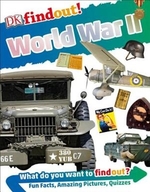
DK FINDOUT - WORLD WAR 2
By: dk | Published: November 2017
Discover World War II facts and hear from people who lived through the war that shaped the modern world, from the cause of the conflict to the most... [Read More]
Discover World War II facts and hear from people who lived through the war that shaped the modern world, from the cause of the conflict to the most important battles. From the prewar rise of Nazi Germany to the start of the war with the invasion of Poland in 1939 to the end of the war in 1945 and the Nuremburg Trials, all aspects of the deadliest conflict in human history are covered in great detail in DK findout! World War II with content that is accessible and appropriate for children 6–9 years old. Series Overview: The DK findout! series helps kids ages 6–9 become experts on their favorite subjects—from dinosaurs to Ancient Rome to computer coding. Each book focuses on a specific topic and makes learning fun through amazing images, stimulating quizzes, and cutting-edge information kids are eager to know.
- ISBN
9781465463111 - Binding
Paperback - Category
Social Studies - 19th & 20th Century History
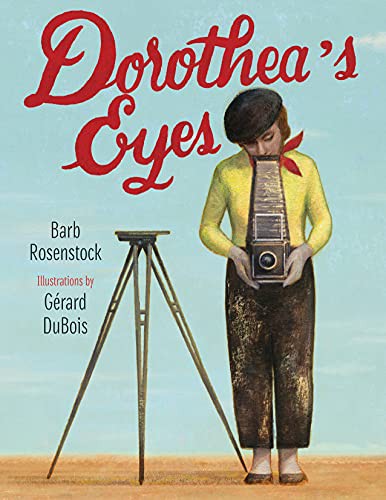
DOROTHEA'S EYES
By: barb rosenstock | Published: February 2022
- ISBN
9781635925630 - Binding
Paperback - Category
Social Studies - 19th & 20th Century History

EXPLORE WITH CHRISTOPHER COLUMBUS
By: cynthia obrien | Published: March 2014
This engaging book follows the travels of Italian explorer Christopher Columbus. Historical information and high-interest fact boxes are presented in... [Read More]
This engaging book follows the travels of Italian explorer Christopher Columbus. Historical information and high-interest fact boxes are presented in an entertaining tabloid style as Columbus navigates his way to the New World. Topics include what led Columbus to become an explorer, early beliefs about the geography of the world, life on sea voyages, failed colonies, and the legacy of Columbus. "About this title" may belong to another edition of this title.
- ISBN
9780778712459 - Binding
Hardcover Canadian - Category
Social Studies - 19th & 20th Century History
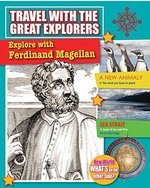
EXPLORE WITH FERDINAND MAGELLAN
By: marie powell | Published: September 2014
This exciting book follows the travels of Portuguese explorer and navigator Ferdinand Magellan who led an expedition to the Spice Islands that ended... [Read More]
This exciting book follows the travels of Portuguese explorer and navigator Ferdinand Magellan who led an expedition to the Spice Islands that ended up circumnavigating the Earth. Historical information and high-interest fact boxes are presented in a tabloid-news style that guides readers through major voyages, explorations, and discoveries. Topics include what led Magellan to sail west on behalf of Spain, life on board ship, the first-ever exploration of the Pacific Ocean, the completion of the voyage after Magellan's death in battle, and Magellan's legacy. From School Library Journal: Gr 2-4-This flawed, poorly designed series introduces the earliest world explorers and their varied destinations. Their stories are told through sound bites of narrative and interspersed frantically with pullouts. Some pages are composed entirely of sidebars. These books may be designed for readers influenced by social media, but they neglect narrative entirely, and kids will struggle to find a central textual thread amid the blasts of information competing for their attention. The series does a disservice to the historical images by including tiny versions, clustered too closely together, and there's often a disconnect between text and images. The authors don't always let readers come to their own conclusions. For example, Ferdinand Magellan is labeled as "pig headed" without any explanatory anecdotes or examples. Give these titles a pass.α(c) Copyright 2014. Library Journals LLC, a wholly owned subsidiary of Media Source, Inc. No redistribution permitted. "About this title" may belong to another edition of this title.
- ISBN
9780778714255 - Binding
Hardcover Canadian - Category
Social Studies - 19th & 20th Century History
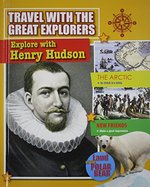
EXPLORE WITH HENRY HUDSON
By: tim cooke | Published: March 2014
Discusses the explorer's failed attempts to find a sea route to Asia through the Arctic Circle, his exploration of the east coast of North... [Read More]
Discusses the explorer's failed attempts to find a sea route to Asia through the Arctic Circle, his exploration of the east coast of North America, and the mutiny that ended his life. "About this title" may belong to another edition of this title.
- ISBN
9780778712466 - Binding
Hardcover Canadian - Category
Social Studies - 19th & 20th Century History
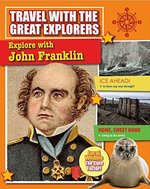
EXPLORE WITH JOHN FRANKLIN
By: cynthia obrien | Published: September 2015
This informative book follows the travels of the Spanish conquistador Francisco Pizarro in Peru. Historical information and high-interest fact boxes... [Read More]
This informative book follows the travels of the Spanish conquistador Francisco Pizarro in Peru. Historical information and high-interest fact boxes are presented in an entertaining tabloid style that guides readers through major voyages, explorations, and discoveries. Topics include what led Pizarro to head into the Andes, first encounters with the Inca, the Inca capital at Cusco, Pizarro's desire for gold, and the overthrow of the Inca Empire. From School Library Journal: Gr 3-6-Bright colors and copious illustrations, along with the always-popular subject, will attract readers. Inside, there is a great deal of information, though the presentation is visually busy and material is sometimes conveyed out of sequence. Some sidebars are printed in light-colored text on bright backgrounds and are difficult to read. Short, two-to-three-word column headings can be distracting. Despite these difficulties, the books do contain relevant and interesting content, both about main and related topics. John Franklin includes information about survival in the Arctic, while James Cabot considers the aboriginal Beothuk people of Newfoundland. "My Explorer Journal" sidebars provide insightful discussion prompts. Illustrations include several reproductions and daguerreotypes. Lists of suggested online and print materials are well done. VERDICT These are attractive high-interest materials for lower level readers.α(c) Copyright 2011. Library Journals LLC, a wholly owned subsidiary of Media Source, Inc. No redistribution permitted. "About this title" may belong to another edition of this title.
- ISBN
9780778717034 - Binding
Hardcover Canadian - Category
Social Studies - 19th & 20th Century History
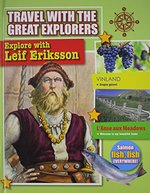
EXPLORE WITH LEIF ERIKSSON
By: natalie hyde | Published: September 2014
This exciting book follows the travels of Viking explorer Leif Eriksson from Iceland to Greenland and on to North America. Historical information and... [Read More]
This exciting book follows the travels of Viking explorer Leif Eriksson from Iceland to Greenland and on to North America. Historical information and high-interest fact boxes are presented in a tabloid-news style that guides readers through major voyages, explorations, and discoveries. Topics include what led Eriksson to sail west, Viking exploration, life on Viking longships, North American settlements, and Eriksson's legacy. From School Library Journal: Gr 2-4-This flawed, poorly designed series introduces the earliest world explorers and their varied destinations. Their stories are told through sound bites of narrative and interspersed frantically with pullouts. Some pages are composed entirely of sidebars. These books may be designed for readers influenced by social media, but they neglect narrative entirely, and kids will struggle to find a central textual thread amid the blasts of information competing for their attention. The series does a disservice to the historical images by including tiny versions, clustered too closely together, and there's often a disconnect between text and images. The authors don't always let readers come to their own conclusions. For example, Ferdinand Magellan is labeled as "pig headed" without any explanatory anecdotes or examples. Give these titles a pass.α(c) Copyright 2014. Library Journals LLC, a wholly owned subsidiary of Media Source, Inc. No redistribution permitted. "About this title" may belong to another edition of this title.
- ISBN
9780778714279 - Binding
Hardcover Canadian - Category
Social Studies - 19th & 20th Century History
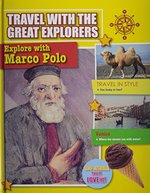
EXPLORE WITH MARCO POLO
By: tim cooke | Published: September 2014
This entertaining book follows the travels of Italian merchant and adventurer Marco Polo who traveled across Asia. Historical information and... [Read More]
This entertaining book follows the travels of Italian merchant and adventurer Marco Polo who traveled across Asia. Historical information and high-interest fact boxes are presented in a tabloid-news style that guides readers through major journeys, explorations, and discoveries. Topics include what led Polo to travel to China, the Silk Road, life in Central Asia, the Chinese empire, Polo's famous book, and his legacy. From School Library Journal: Gr 2-4-This flawed, poorly designed series introduces the earliest world explorers and their varied destinations. Their stories are told through sound bites of narrative and interspersed frantically with pullouts. Some pages are composed entirely of sidebars. These books may be designed for readers influenced by social media, but they neglect narrative entirely, and kids will struggle to find a central textual thread amid the blasts of information competing for their attention. The series does a disservice to the historical images by including tiny versions, clustered too closely together, and there's often a disconnect between text and images. The authors don't always let readers come to their own conclusions. For example, Ferdinand Magellan is labeled as "pig headed" without any explanatory anecdotes or examples. Give these titles a pass.α(c) Copyright 2014. Library Journals LLC, a wholly owned subsidiary of Media Source, Inc. No redistribution permitted. "About this title" may belong to another edition of this title.
- ISBN
9780778714286 - Binding
Hardcover Canadian - Category
Social Studies - 19th & 20th Century History

EXPLORE WITH PONCE DE LEON
By: cynthia obrien | Published: September 2014
This informative book follows the travels of Spanish explorer Juan Ponce de Lon to the Caribbean and Florida. Historical information and... [Read More]
This informative book follows the travels of Spanish explorer Juan Ponce de Lon to the Caribbean and Florida. Historical information and high-interest fact boxes are presented in a tabloid-news style that guides readers through major voyages, explorations, and discoveries. Topics include Ponce de Lons trip to the New World on Columbus second voyage, being appointed a governor in the Caribbean, his actions toward the Taino people, life in the Spanish colonies, claiming Florida for Spain, and his legacy. From School Library Journal: Gr 2-4-This flawed, poorly designed series introduces the earliest world explorers and their varied destinations. Their stories are told through sound bites of narrative and interspersed frantically with pullouts. Some pages are composed entirely of sidebars. These books may be designed for readers influenced by social media, but they neglect narrative entirely, and kids will struggle to find a central textual thread amid the blasts of information competing for their attention. The series does a disservice to the historical images by including tiny versions, clustered too closely together, and there's often a disconnect between text and images. The authors don't always let readers come to their own conclusions. For example, Ferdinand Magellan is labeled as "pig headed" without any explanatory anecdotes or examples. Give these titles a pass.α(c) Copyright 2014. Library Journals LLC, a wholly owned subsidiary of Media Source, Inc. No redistribution permitted. "About this title" may belong to another edition of this title.
- ISBN
9780778714293 - Binding
Hardcover Canadian - Category
Social Studies - 19th & 20th Century History
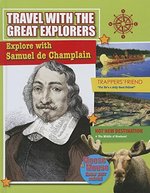
EXPLORE WITH SAMUEL DE CHAMPLAIN
By: cynthia obrien | Published: March 2014
This engaging book follows the travels of French mapmaker and navigator Samuel de Champlain as he mapped out the St. Lawrence River and the North... [Read More]
This engaging book follows the travels of French mapmaker and navigator Samuel de Champlain as he mapped out the St. Lawrence River and the North American Coast. Historical information and high-interest fact boxes are presented in an entertaining tabloid style. Topics include what first led Samuel de Champlain to the New World, his role as the Father of New France and the St. Lawrence River, accurate mapmaking, establishing trade networks, and the legacy of Champlain. "About this title" may belong to another edition of this title.
- ISBN
9780778712565 - Binding
Hardcover Canadian - Category
Social Studies - 19th & 20th Century History
